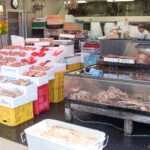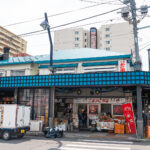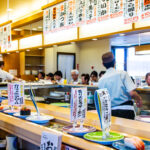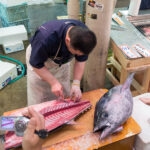This post may contain affiliate links. Please read our disclosure policy.
Located on the edge of Japan’s deepest bay, Numazu offers some of the freshest and most affordable seafood meals in the Izu Peninsula.
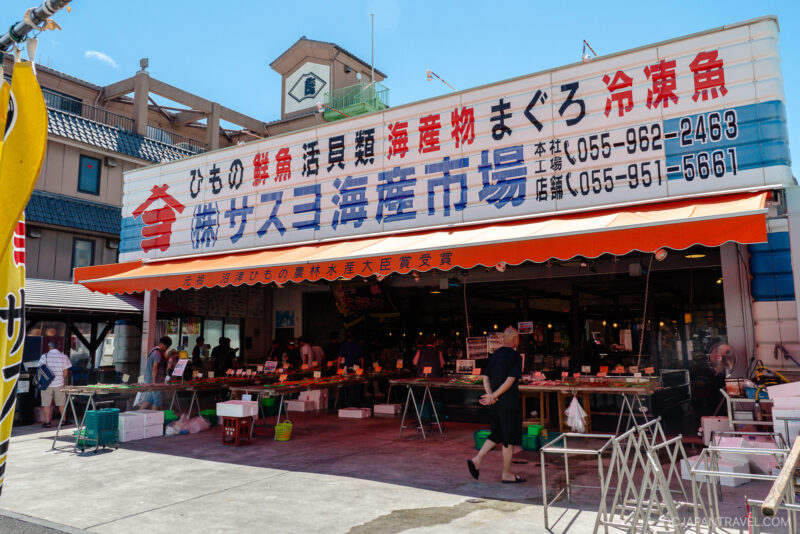
Why Visit Numazu for Seafood?
Numazu is a bustling port city best known for its lively fish market and Suruga Bay’s daily catch. Every morning, auctions set the pace of the town, and visitors can sample the results at restaurants just steps away. It’s an easy stop that combines local culture, ocean views, and satisfying meals.
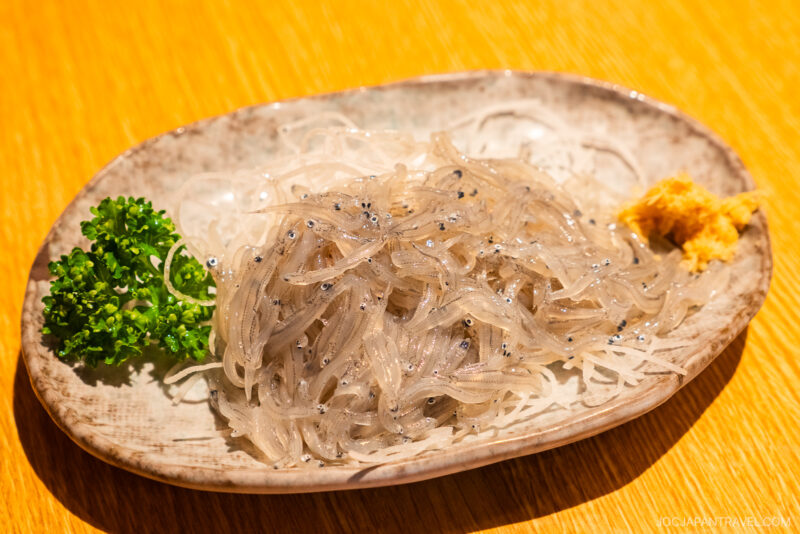
Highlights include:
- Numazu Fish Market – See early morning auctions, browse seafood shops, and experience the atmosphere of a working port.
- Dried Horse Mackerel – Numazu’s specialty himono, a lightly salted, semi-dried fish grilled to perfection.
- Seawall Promenade – A scenic waterfront path with views of Suruga Bay and the city skyline.
The atmosphere here is casual and welcoming, a fun contrast to Izu’s mountain trails and historic landmarks.
Where to Eat: Uogashi Maruten (魚河岸丸天)
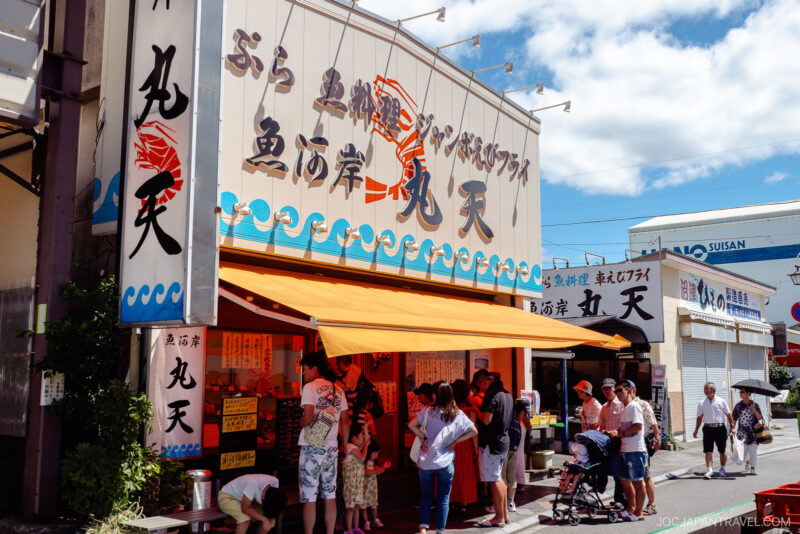
Among the many restaurants near the market, Uogashi Maruten is a clear local favorite. You can tell by the two shops on the same street, often with lines spilling out the door.
We stopped by the original location, and it didn’t take long to see why it’s so popular. The menu is large, the portions are generous, and the prices are pleasantly reasonable for the quality you get.
What We Ordered
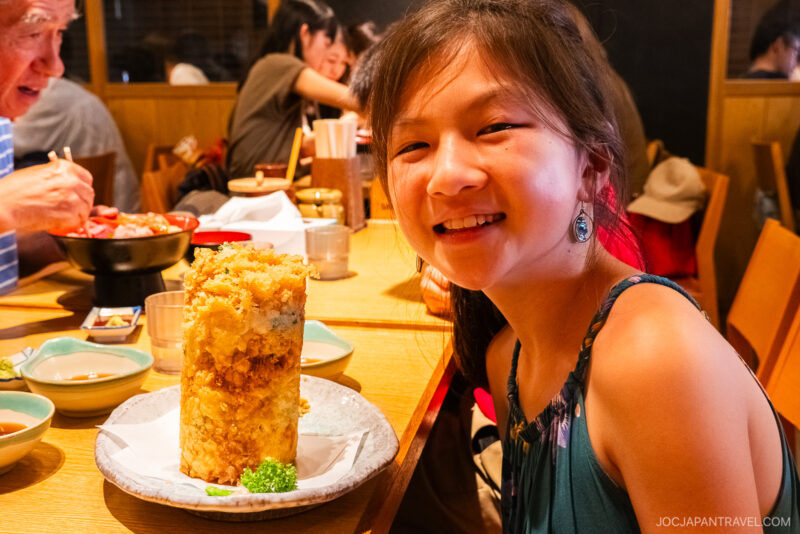
- Kaisendon (海鮮丼) – A seafood bowl topped with sashimi, ikura (salmon roe), and the day’s local catch. Prices start at around ~¥1,600, and the balance of fish to rice was spot on.
- Grilled Salmon Belly – Rich, tender, and flavorful
- Himono Set – Featuring grilled horse mackerel, this plate gave us a true taste of Numazu tradition.
- Seafood kakiage – Signature tempura fritter, shaped into a tall cylindrical tower and packed with fresh seafood.
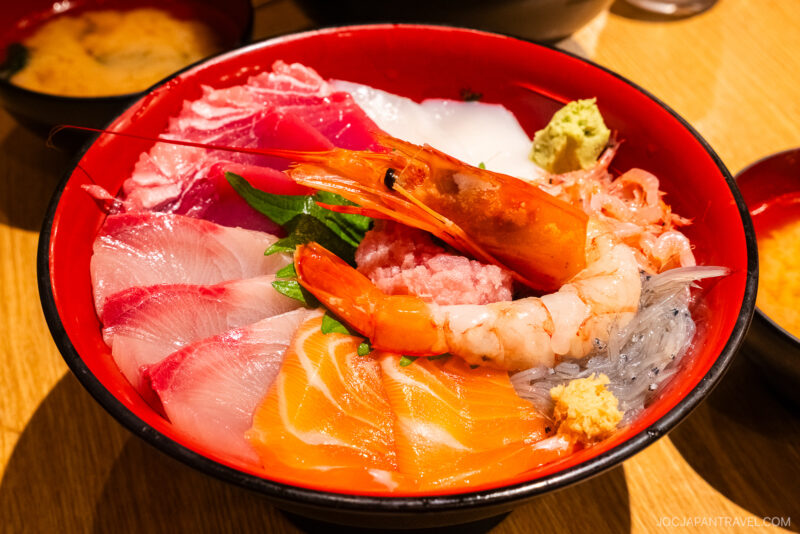
Compared to other seafood markets we’ve tried across Japan, the quality and value here is worth stopping by.
How to Get to Numazu
By Train
Ride the Tokaido Shinkansen to Mishima Station, then transfer to the JR Tokaido Line for one stop to Numazu Station. From the station, take a local bus or taxi to Numazu Port.
- Bus: 10–15 minutes to Minato or Senbon Minato stops.
- Taxi: about 10 minutes to the port area.
By Car
Numazu is about 20 minutes from Mishima and 40–60 minutes from Ito or Shuzenji. Paid parking is available near the fish market and along the port.
Pro Tip: Arrive before noon for the freshest selection and shorter waits. Popular items may sell out after 1:00 PM.
Is Numazu Worth Visiting for Seafood?
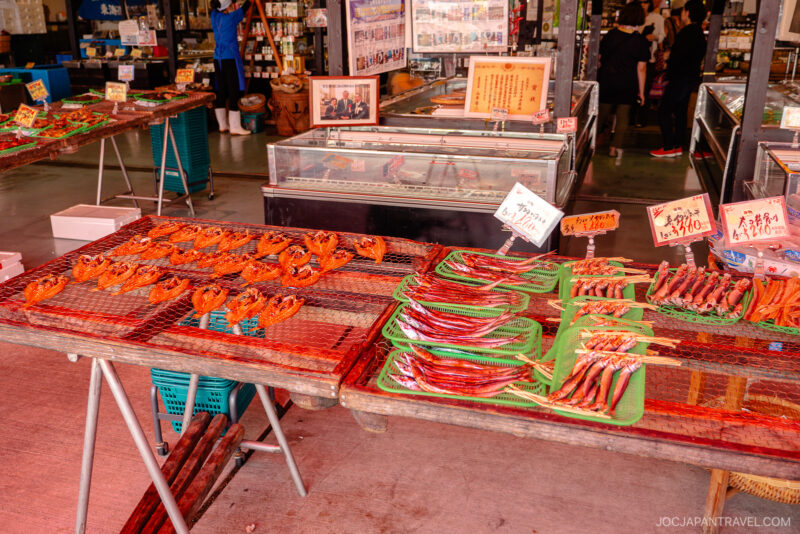
Numazu combines a working port, excellent food, and a relaxed seaside setting. It’s an ideal place to enjoy sashimi, regional specialties like himono, and views of Suruga Bay. If you’re traveling across the Izu Peninsula, stopping here for a meal is well worth it.
More to Explore Nearby
Once you’ve enjoyed your seafood lunch, consider adding these spots to your Izu itinerary:
- Mishima Skywalk – Japan’s longest pedestrian suspension bridge with panoramic mountain and bay views.
- Mishima Taisha Shrine – A historic Shinto shrine with centuries of cultural significance.
- Izunokuni Panorama Park – A ropeway ride to Mt. Katsuragi’s Sky Garden and Mt. Fuji views.
- Nirayama Reverberatory Furnace – A UNESCO World Heritage Site showcasing Japan’s early industrial history.

